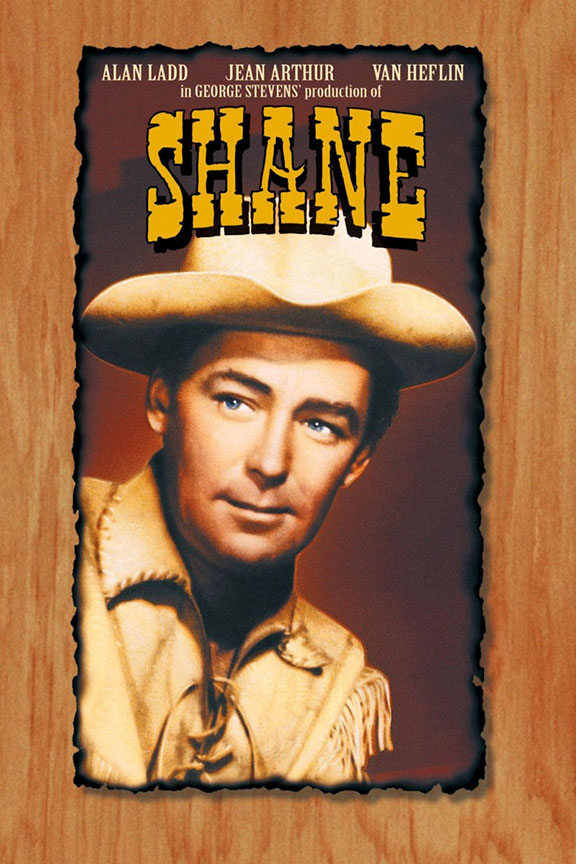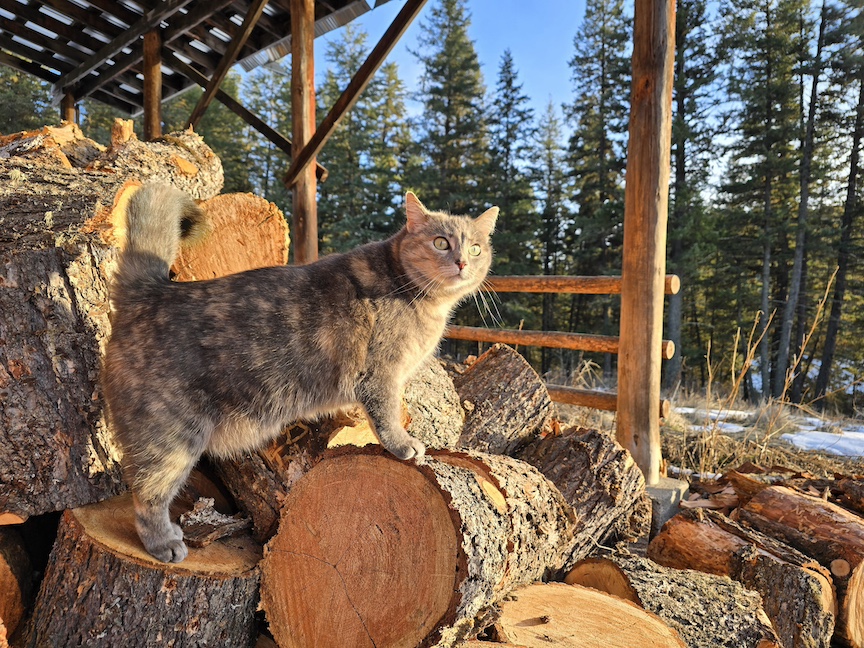Starring: Alan Ladd, Van Heflin, Jean Arthur, Jack Palance
Director: George Stevens
Released: 1953
Mood: If you’ve been thinking you might want to have kids soon and need to watch a movie with a solid Western story that’s also guaranteed to crush those biological urges for another decade or so.
I’ve learned a lot from watching old Western movies. What I learned from Shane is that I’m apparently dead inside.
Everyone loves this movie. Critics, audiences, the whole works. One of the main reasons they love it is because of Brandon De Wilde, Shane’s child star. I’ve read so many reviews singing his praises, and I JUST DON’T F*CKING GET IT.
If the kid wasn’t in every single scene, I’d say this is an amazing movie. There’s so much here to praise, and I’ll try to do it justice. But that persistent one-note whining drove me up the wall.
It prevented me from fully falling in love with Shane, and that’s sad.

Shane opens over a lush Wyoming valley. Young Joey Starrett (De Wilde) is stalking a deer with a gun when a stranger rides into view. Joey runs home to the senior Joe Starrett (Van Heflin), as Shane (Alan Ladd) rides up to their homestead.
Shane is passing through, and observes a tense disagreement between cattle baron Rufus Ryker (Emile Meyer) and Starrett over his claim on the land. Shane ends up crashing in their barn for the night, and is persuaded to stick around and help Starrette with the farm.
But any movie fan can tell that Shane is going to do a lot more than just till the land. The dispute between the farmers and Ryker gets vicious, especially when he brings in menacing gunfighter Jack Wilson (a young Jack Palance).

Alan Ladd does an impressive job as Shane. The character is mysterious, and Ladd’s portrayal has LAYERS.
He’s soft-spoken, but physical. He doesn’t say much, but watches everything. He’s jumpy, so you get the sense that his past involves guns. But it’s not the kind of jumpy where he’s constantly watching out windows, or afraid to stick around one place – so it doesn’t seem like he’s being chased.
The thing is, Shane’s mystery remains unsolved through the end credits. Who is Shane? We’ll never know.
The first action sequence is an hour into the film, when Ladd finally shows us what’s behind his long, purposefully expressionless looks. That saloon brawl is more than worth the wait – although Sam Grafton (Paul McVey) is flat and unconvincing as a spectator.
Another question that goes unanswered is “did Shane have a thing for Starrett’s wife?”. Marian Starrett (Jean Arthur) is pretty, a great cook, and a devoted wife. Yet when she and Shane lock eyes or dance together, the music swells and it’s like… do they want us to make assumptions? And Starrett himself makes a reference to how she would be “taken care of” if something happened, obviously implying by Shane.

Okay, let’s talk about the damn kid.
Here are my feelings on his performance:
- Every line is delivered exactly the same way
- There’s no character growth
- There’s no personality
- His whining and badgering disrupts otherwise great scenes
Have I been spoiled by the extremely talented child actors of modern cinema, like Dakota and Elle Fanning, Haley Joel Osment, Emma Watson, Quvenzhane Wallis, and the cast of Stranger Things?
De Wilde is the only child actor to ever win a Donaldson Award (theatre), which he did the year before shooting Shane. For what? Did he get the award for being cute and blond? I just don’t see it. I spent most of the movie wanting to smack him. Someone, PLEASE, explain.
![]()
The cinematography in Shane is f*cking epic. It’s epic for the early ‘50s, but it’s awesome in general. It took two years to edit the movie, after going 53 days over on shooting. Apparently director George Stevens was meticulous, and it paid off – Shane won the 1954 Academy Award for Best Cinematography.
The costuming is painstakingly authentic. I read that they imported a herd of Jersey cows because the cows on location looked too healthy, and they needed to evoke farmers having trouble.
Most of the actors are fantastic, too. Stonewall Torrey (Elisha Cook Jr.) stands out as the most interesting character, with more bravery than brains. Jack Palance was good, but I didn’t find his brief scenes deserving of his Best Supporting Actor nom. Ben Johnson’s performance as Calloway was stronger.
Audiences and critics shredded High Noon for not having enough proper Western action, yet one year later they were showering praise all over Shane, which is 30 minutes longer and has even less action. Go figure. I thought Shane felt a bit long, but then again, maybe I was just super aggravated by a kid’s repetitive chatter.
If you love kids and have all those maternal/paternal/infernal instincts, you probably think that a) Shane is perfect, and b) I’m a robot.
I may be a double Scorpio and a Slytherin, but my grinchy heart does have a pulse. Although, if I WAS a robot, I could live in Westworld and that would be f*cking awesome.


